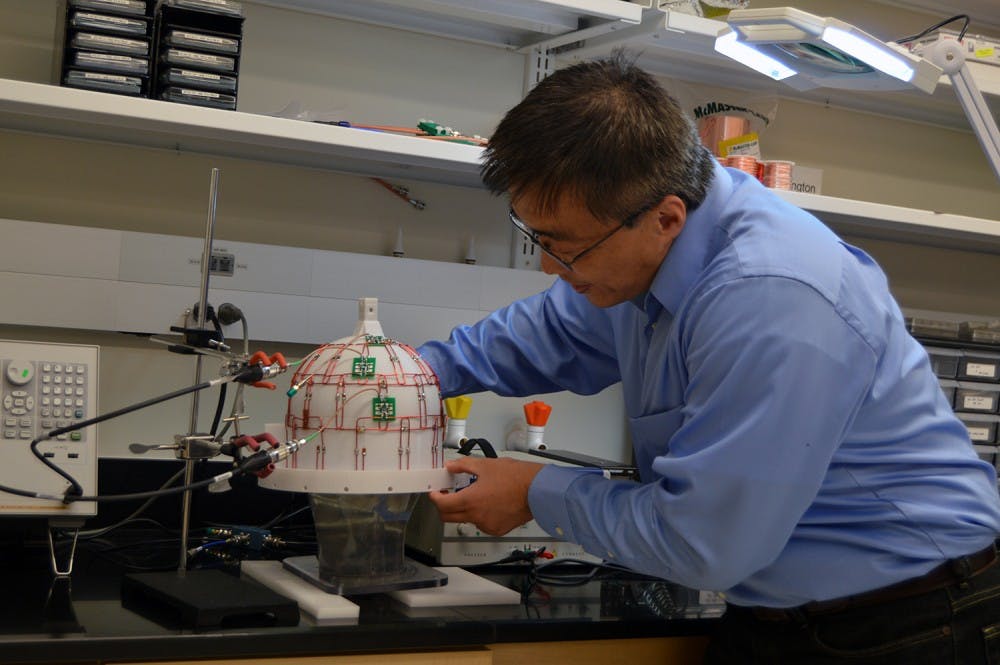It seems strange to have a facility host both its grand opening and its 10th anniversary celebration on the same day, but such was the case for UNC’s Biomedical Research Imaging Center.
The opening of the BRIC’s new building, Marsico Hall, coincided with the center’s 10-year celebration Wednesday.
“The mission of the BRIC is to facilitate and promote imaging research, and to educate the next generation of imaging scientists,” said Weili Lin, director of the BRIC and vice chairperson of basic research in radiology.
Previously, the center had been located in an old imaging building for UNC Hospitals. The construction of the new building took five years and was funded by the state as well as the University, Lin said. The new, high-tech building cost upwards of $200 million, said Juanita Ramirez, the study coordinator for the center.
“In general, the purpose of the BRIC is to provide investigators, both internally and externally, with all of the resources necessary to further their imaging research,” Ramirez said.
“One of the terms we use a lot is ‘from bench to bedside’... everything (needed for imaging) is in this building.”
The imaging aspect of the facility is comprised of four scanners: a 3T MR, a 7T MR, a PET/MR, and a PET/CT.
According to Matt Phillips, a research imaging specialist, the MR scanners are full-body magnetic scanners, while the PET/MR scanner is a combination of an MR scanner that can be used for oncologic scanning. The PET/CT scanner can be used to track radioactive “tracers” — or materials that track certain molecules — throughout the body. The “T” in the scanner names stand for Tesla, and indicate the strength of the magnetic field of the machine.
Additionally, the center offers equipment for preclinical trials, as well as a radiochemistry lab. The lab includes a cyclotron, which helps aid in tracer production, said Eric Smith, a professor of radiology.



